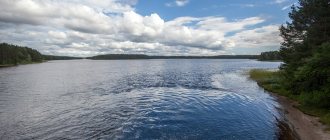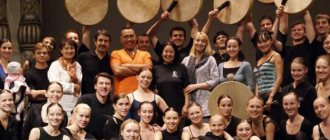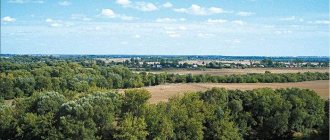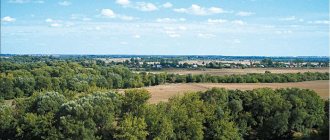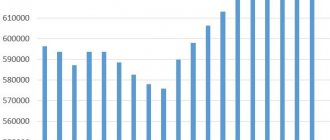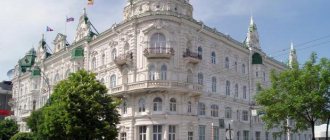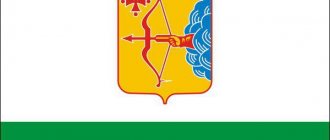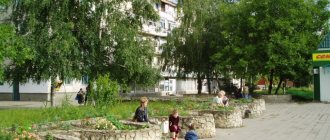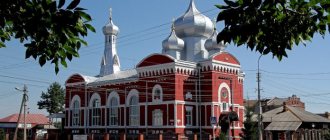Geographical characteristics
The city is located on the left bank of the river. Volga, at a distance of 20 km southwest of Samara. The area of the city territory is 86 km2. Novokuibyshevsk forms an urban district with an area of 264 km2. The distance to the Volga River is 6 km.
The climate is characterized by an average level of continentality. Winter is relatively frosty. In January, the average monthly temperature is minus 12.3 degrees, and in July - +21.7 degrees. Precipitation is moderate, but closer to insufficient. 445 mm of them fall per year. Droughts occur in summer. However, it is more humid here than in the lower part of the Volga region.
The coldest month is January, and the hottest month is July. In winter there are frosts down to -30. The weather in winter is often uncomfortable, with cold winds.
Depopulation has worsened
3K 1 3 min.
Over the past two years, the population of the Samara region has decreased by 20 thousand people. The region's population decline has accelerated since 2017. The rate of population decline coincides with the forecast for the socio-economic development of the region until 2030. Experts believe that the negative situation greatly affects investment attractiveness.
The population of the Samara region is steadily declining
Photo: Yuri Strelets, Kommersant
Samarastat published the official population of the Samara region as of January 1, 2021. According to the department, 3.18 million people live in the region. The territorial statistics body will report the final data on April 1 of this year after the Federal Tax Service has completed the reconciliation of civil status records, but this will have virtually no effect on the final figures, Samarastat said. Over the year, the region's population decreased by almost 10 thousand people, or 0.3%. The rate of population decline in the region has accelerated over the past two years. During this period, the subject of the Russian Federation lost 20 thousand people. According to the forecast of socio-economic development of the region, the population of the Samara region in 2030 will decrease to 3.09 million inhabitants.
Among the cities of the Samara region, the worst demographic situation was recorded in Zhigulevsk, Syzran and Novokuibyshevsk. The population of Syzran over the past 10 years has decreased by more than 10 thousand people, dropping to 169 thousand inhabitants. Novokuibyshevsk may lose its status as a “hundred thousandth city” in the coming years. The population of the Zhigulevsk urban district decreased by almost 2% over the year - from 57.7 thousand people to 56.6 thousand people. Local residents regularly complain about a number of unresolved social issues. For example, in Zhigulevsk there is no maternity hospital. This problem was also identified in the mobile reception room of the governor of the Samara region. “We ask you to carefully analyze the situation in Zhigulevsk once again. It seems that a settlement with the status of an urban district and a population of more than 50 thousand people has the right to count on its own maternity hospital,” the head of the region emphasized in the mobile reception, turning to the regional Ministry of Health after another complaint.
In Samara and Togliatti the population is also gradually decreasing. Compared to 2015, the population of Samara decreased from 1.17 million people to 1.15 million people. Over the same period, Togliatti became smaller by 17 thousand people; now 703 thousand people live in the city. Over the past 10 years, in the ranking of the country's largest cities, Samara has slipped from 6th to 9th place, behind Kazan, Omsk and Chelyabinsk. Over the same period, Tolyatti lost 18th position, losing to fast-growing Tyumen. Among Russian cities with a population of more than 500 thousand people, the same negative trend is observed only in Volgograd.
According to the deputy of the Samara Provincial Duma, Alexander Stepanov, the decline in the population of the Samara region is associated with the general economic situation. “In the early 1990s, the region’s GDP was one and a half times higher than that of Tatarstan. During that period, the region's population grew. Now, unfortunately, Samara is losing ground and becoming more provincial. The situation is aggravated by corruption scandals and clannishness in many areas. Voters constantly complain about unemployment and lack of prospects in small towns of the province,” said Mr. Stepanov.
Managing partner of the Veta expert group, Ilya Zharsky, believes that the investment attractiveness of the region depends on the dynamics of population changes. “The outflow of residents indicates a low level of socio-economic indicators and quality of life. At the same time, we are talking about natural population decline due to the excess of the mortality rate over the birth rate, which always occurs under the influence of negative changes in the well-being of the population, and about decline as a result of the unfavorable influence of internal migration. So, last year in the Samara region there was indeed an increase in mortality (+1.5% as of the third quarter) and a decrease in the birth rate (-2.7%), while mortality has long exceeded the birth rate. However, the low birth rate and high mortality rate could not have such a significant impact on the change in the population of the region on their own, so it is worth taking into account the possible negative impact of migration processes. The main factor forcing the population to migrate is the lack of work. It is interesting that the Samara region is one of the ten most prosperous subjects of the Russian Federation in terms of unemployment, but is inferior in this indicator to neighboring Tatarstan. This may stimulate the outflow of the working population in favor of more prosperous regions of the country. It is the material well-being that a region can offer and provide that determines its attractiveness not only for the population, but also for business, if we are talking about the service sector and the sale of consumer goods,” the expert noted.
Andrey Sazonov
Infrastructure and ecology
The city is located 5 kilometers from the railway. d. station Novokuibyshevsk, belonging to the Kuibyshev railway. There are 16 trolleybus and 25 bus routes within the city. There is a river cargo port.
Buildings in the city are predominantly multi-storey, with a number of floors ranging from 2 to 15 floors. The city has a large number of different enterprises, which makes it one of the most polluted in Russia.
Population: numbers and dynamics
In 2021, the population of Novokuibyshevsk was 102,933 people. The city is characterized by relative stability in the number of residents since the late 60s of the 20th century. In 1967, the population was 107 thousand. The population peaked in 1999, when the population was 116,400. Before this year, there was a slow increase in the number of residents, and after that there was a slightly more rapid decline.
The population of Novokuibyshevsk is in 168th place among other Russian cities. The male part of the population is 45.2%, and the share of women is 54.8%. In 2007, the average age of residents was 40 years (37 for men and 43 for women).
The reason for the population decline may be migration to the neighboring city of Samara. For the most part, those who remain are those who have been working at local enterprises for a long time. Most of all, young people move to Samara. This is largely due to the lack of prestigious universities in Novokuibyshevsk.
Another reason for the population decline is the extremely unfavorable environmental situation, which makes the issue of resettlement pressing for many city residents. The greatest damage to the environment is caused by oil refineries, which emit various harmful compounds into the air and water. Residents of the city complain about poor air quality and that it is difficult for them to breathe. Statistics show a significant increase in respiratory tract diseases and cancer compared to the Russian average. All this is also the cause of population decline.
They are gradually trying to bring the pollution situation under control by removing oil-contaminated waters that have accumulated under the city and intensifying the cleaning of exhaust gases from factory floors. Perhaps in the future such work will have an impact on improving the demographic indicators of Novokuibyshevsk.
The population of Novokuibyshevsk is assessed as kind and sympathetic. Also, residents, including those who migrated to another city, are characterized by pride and a sense of patriotism towards their small homeland.
Novokuibyshevsk
Settlements on the site of the future city
The lands on which Novokuybyshevsk is located today were “wild and wild” steppes in the 16th–17th centuries. The only inhabitants of this region at that time were the Nogai Tatars, who, with the arrival of warm spring days, migrated with their herds and belongings from the Caspian Sea to the north along the meadow side of the Volga. At the beginning of the 17th century, nomadic Kalmyks also appeared here.
The Trans-Volga steppes remained largely empty in the middle of the 18th century. Between 1760 and early 1770s Many of the villages that are today located south of Samara arose.
In gratitude for their help in enthroning, Catherine II granted vast Volga lands to Counts Gregory and Alexei Orlov. One of their estates was located on the site of modern Novokuibyshevsk, in the area of the Privolzhskaya biofactory founded in 1932 (now inactive). The development of new territories was taken under state control and the result was rapid population growth. So, for the period 1766–1795. in the Samara district the number of settled residents increased 10 times.
of Mordovian, Chuvash and Russian Lipyagi were founded
, which later became part of Novokuybyshevsk. According to one version, the name “Lipyagi” comes from the abundance of linden trees that grew here. Linden blossom, linden aroma, the linden kingdom, the Linden Key spring with healing water have become the personification of these places.
The villages were state-owned, that is, they were under the jurisdiction of the state and were inhabited mainly by state peasants. According to information from 1798, in the village of Russkie Lipyagi there were 54 courtyards of the department of the Main Kriegskomissariat with 305 souls of both sexes (150 male and 155 female), in the arable soldier's courtyards - 48 souls (23 males and 25 female), 7 courtyards of single-sex householders with 49 souls of both sexes (27 male and 22 female), 2 palace courtyards with 11 souls (6 male and 5 female), 2 courtyards of yasak peasants with 13 souls (6 male and 7 female). In the village of Chuvashskie Lipyagi there were 18 households with 80 yasak peasants of both sexes (43 males and 37 females). In Mordovian Lipyaga there were 24 households of yasak peasants, which included 151 souls (83 males and 68 females), 2 economic households with 11 souls (6 males and 5 females).
Three villages, called by the common name Lipyagov, were founded close to each other. From the village of Russkie Lipyagi to the Chuvashskie Lipiagi the distance was a little more than two versts, and to the Mordovian Lipiagi - five versts. In the 1st half of the 19th century, the peasants of these villages were transferred to the category of appanages. Only in Russian Lipyaga did state peasants live throughout the entire post-reform period; in 1883, 13 households were inhabited by them.
Among the Lipyagov capitalists of the late 19th – early 20th centuries. Especially notable were: Ya. I. Frolov, Ya. Kh. Surov, F. P. Gorbushkin. Their main occupation was buying horses and cattle and their subsequent resale in Samara. The annual trade turnover of Yakov Ivanovich Frolov was 3 thousand rubles. The annual turnover of the operations of Christopher Antonovich Bukatov, who owned a furniture store and became rich with “rooms and brothels” in Samara, was estimated at 10 thousand rubles. Petty grocery trade, the sale of hot tea and tobacco products were common among the peasants; their earnings were low.
In 1903, Samara tradesman Pavel Koshelev acquired 19.6 acres of land near the village of Russkie Lipyagi and a year later built the first brick factory on the territory of the future city of Novokuybyshevsk, which employed only 3 people. In Russian Lipyaga, Evdokim Ivanovich Dyachkov and Mikhail Alekseevich Baranov built mills driven by oil engines. Dairy products, watermelons and melons were brought to Samara from Lipyagi for sale. Some were engaged in driving.
After the revolution
The October Revolution of 1917 in the villages of Russian, Chuvash and Mordovian Lipyagi occurred without a single shot, quite routinely. Peasants gathered for meetings, usually held in school buildings, at which representatives of the Samara Bolshevik organization and the Voskresensk volost announced the establishment of a new government. There were no documented protests against Soviet power in Lipiagi.
At the end of 1917, the peasants of the village of Russkie Lipyagi decided at a general meeting: “The estate and garden of the former landowner Poplavsky should be taken over by the society.”
. Residents of Novokuybyshevsk talk about that garden to this day, remembering the artificial lake from which they watered and irrigated a variety of fruit trees and garden crops. The garden, located on an area of 15 hectares in the area of the current Lower Square of Novokuybyshevsk and, it is believed, was planted and grown during serfdom, was known throughout the Samara province. It remained here until 1931, when construction of the biofactory began, after which it was destroyed.
In June 1918, bloody battles took place in the Lipyagov area with units of the Czechoslovak corps. But in November, units of the Red Army under the command of G.D. Gai and V.I. Chapaev restored Soviet power in this territory.
In 1923, a state farm was organized in Mordovian Lipiagi. On June 8, 1925, its permanent staff included 7 people. The state farm had 6 horses and 10 heads of cattle. The area sown with spring crops was 52 dessiatines, row crops - 15 dessiatines, winter crops - 18 dessiatines. The state farm also had a vegetable garden of 5 acres and an orchard. The pride of the state farm was considered to be a demonstration winter field sown with pure-grade seeds.
According to data for 1924, in the Voskresenskaya volost there were 5 schools, including in the Mordovian, Chuvash and Russian Lipyagas. They trained in two shifts. The number of students in Mordovian Lipiagi was 140 people, in Chuvash Lipiagi - 50, in Russian Lipiagi - 60.
In 1932, not far from the station, Privolzhskaya Biofactory No. 6 was built, where the production of biological products for the treatment of diseases of agricultural livestock and their prevention was established and carried out for many years.
City Novokuibyshevsk
The Great Patriotic War gave a powerful impetus to the development of the Kuibyshev region and the creation of an oil production and oil refining industry on its territory. In May 1946, construction of an oil refinery (ORP), one of the largest in the country, began near the Russian, Mordovian and Chuvash Lipyagov. An oil refinery village was built next to it. Initially, builders were settled in barracks, temporary huts and huts of rural residents.
This is how the history of the settlement of Novo-Kuibyshevsky began, which after 3 years was transformed into a workers’ village and assigned to the Molotovsky district of the Kuibyshev region. By that time, the population of the village had reached 14 thousand people. The assignment of a new status led to the rapid development of the social and economic spheres. Cultural, educational, and healthcare institutions are being built in the young village. Topical issues of the development of consumer services, trade and transport are on the agenda.
The first units of the oil refinery went into operation in September 1951. In the same 1951, to supply the needs of the refinery and the workers' village with thermal and electrical energy, the Novokuibyshevskaya CHPP-1 was built and put into operation - one of the first stations in the USSR with high-pressure equipment , supporting steam parameters up to 90 atmospheres and 500 degrees Celsius.
By the Decree of the Presidium of the Supreme Soviet of the RSFSR dated February 22, 1952, the workers' settlement of Novo-Kuibyshevsky was given the status of a city of regional subordination and the name Novokuibyshevsk. Just 10 years after its founding, by 1956, 12 schools, 10 kindergartens, 6 clubs, 8 hospitals and clinics were built in Novokuybyshevsk. The city's population reached 60 thousand inhabitants. On February 25, 1956, the cinema “named after the 20th Party Congress” opened; this event became exceptional for the young city. Today, the restored building of the first city cinema houses the youth club “Rus”.
In 1957, the first large chemical enterprise was launched in the Kuibyshev region - the Kuibyshev synthetic alcohol plant (Neftekhimiya CJSC and Samaraorgsintez LLC are now operating on its basis). For many years, the plant was one of the leading enterprises for the production of synthetic ethyl alcohol, as well as phenol in the USSR, and then in Russia.
In 1959, the population of Novokuibyshevsk exceeded 63 thousand people. The growth of the city's population and the construction of new large enterprises have led to a growing need for energy supply. In 1962, Novokuibyshevskaya CHPP-2 was launched. In connection with the country's increased needs for synthetic rubber and the availability of raw materials, in 1962 the construction of the Novokuybyshevsk Petrochemical Plant (NNK) began - an enterprise that became the largest not only in the USSR, but also in Europe. Products manufactured by NOC were in high demand in the country and abroad. In 1999, the enterprise was transformed into CJSC Novokuybyshevsk Petrochemical Company.
Together with chemical and oil refining enterprises, the residential area of Novokuibyshevsk grew rapidly, and the city’s social infrastructure was formed. City healthcare developed, a maternity hospital was opened, which was so necessary for the young city. The network of cultural and educational institutions in Novokuibyshevsk is expanding. A dairy and bakery plant come into operation. The branch of the Research Institute of Synthetic Alcohols provides city enterprises with advanced scientific developments. The city publishes the newspaper “Banner of Communism” (now “Vestnik”) and the city radio broadcasts.
In 1977, the Novokuybyshevsk History Museum opened its doors, the initiator of its creation was a member of the Union of Journalists I. A. Vennikov. The opening of the museum was timed to coincide with the 25th anniversary of the city, and part of the first floor of a four-story residential building (300 sq. m.) was allocated for its exhibition, and the museum received public status.
On November 6, 1985, a trolleybus, a new type of public transport for Novokuibyshevsk, was launched onto the city streets for the first time. This was a test run and it was successful. On December 27, on the eve of New Year 1986, trolleybus service was put into operation.
In the 1980–1990s, a number of comprehensive target programs (“Quality” and others) were adopted and implemented in Novokuibyshevsk with the aim of stabilizing the city’s economy during the years of perestroika and post-perestroika times. Most of the city's enterprises, including the Kuibyshev Synthetic Alcohol Plant, the Novokuybyshevsky Oil Refinery, the Novokuybyshevsky Petrochemical Plant, the Novokuybyshevsky Catalyst Plant, the Knitted Fabric Factory and other enterprises were first transferred to a full self-financing system, achieved self-sufficiency, and by the end of the 1990s. went through the corporatization process.
The first information programs created by city television (now TVN) went on air. The “Olympic Reserve” school was opened, and the city’s cultural institutions achieved great creative success. Temples are being built.
Novokuibyshevsk entered the new millennium, preserving its identity and unique flavor. In 2012, the city celebrated its 60th anniversary - no longer as a city of chemists, but as an industrial center of the Samara region.
Novokuibyshevsk Employment Center
The employment center of the city of Novokuibyshevsk consists of a staff of 23 people. Their average salary is 16,311 rubles. This institution is located at the address: 446 200, Novokuibyshevsk, Samara region, st. Sovetskaya, 6.
The center's tasks include, first of all, providing comprehensive assistance to the unemployed population of the city of Novokuibyshevsk. This applies to both temporary employment and social adaptation of the unemployed, and even psychological support. The center provides assistance in finding suitable vacancies for the unemployed and provides a database of workers for local employers.
The center also provides assistance to self-employed unemployed citizens, including one-time financial assistance. Social payments are made to those who are recognized as unemployed.
Latest job center vacancies
Vacancies for mid-2021 are varied, both in the nature of the work and in the amount of wages. The most common salary is about 11 thousand rubles, and this value is found even in qualified professions: emergency doctor, plumber, master, doctor, teacher, teacher, pharmacist.
Lower salaries for doctors, storekeepers, choir artists, ballet dancers.
Salaries in the range of 20–30 thousand are found in a third of vacancies, and places with salaries in the range from 11 to 20 thousand rubles are quite rare. Salaries over 20 thousand rubles. mainly characteristic of heavy work: welder, machine operator, turner, chemist, installer, accountant and site manager. The highest salary for a diesel locomotive driver is 31 thousand rubles.
About a third of the vacancies list part-time or part-time work, which indicates an unfavorable situation in the local labor market.
In the Samara region, over the six months of 2021, the number of deaths increased by 3.2% (by 691 people) compared to the same period last year. During the same period, the number of deaths exceeded the number of births by 64.1%, writes Kommersant.
The number of births decreased by 6% in January-June this year compared to the same period in 2021. Experts attribute the decline in the birth rate to the fact that the proportion of women of childbearing age among the entire population is decreasing. In their opinion, the increase in mortality this year is influenced indirectly by the coronavirus.
Thus, in January-June 2021, 13,525 people were born in the region, during the same period last year - 14,394 people. This year, 22,190 residents have died, which is 691 more than in the six months of last year (21,499). The natural population decline in the region for January-June of this year was 8,665 people, 7,105 residents for the same period in 2021.
Compared to January-June 2021, in the same period of this year, the number of registered marriages decreased by 20.9%, the number of divorces - by 17.6%. In the region as a whole, per 1,000 married couples formed, 921 broke up (in January-June 2019 - 884).
The decline in the number of residents of the Samara region has accelerated since 2017. During 2017–2018, the population of the region decreased by 20 thousand people. At the beginning of 2021, 3.18 million people lived in the region. Over the year, the region's population decreased by almost 10 thousand people, or 0.3%. According to the forecast of socio-economic development of the region, the population of the Samara region in 2030 will decrease to 3.09 million inhabitants.
Among the cities of the Samara region, the worst demographic situation at that time was recorded in Zhigulevsk, Syzran and Novokuibyshevsk. The population of Syzran over the past 10 years has decreased by more than 10 thousand people, to 169 thousand inhabitants. Novokuibyshevsk may lose its status as a “hundred thousandth city” in the coming years. In Samara and Togliatti the population is also gradually decreasing. Compared to 2015, the population of Samara decreased from 1.17 million people to 1.15 million people. Over the same period, Tolyatti decreased by 17 thousand people; now 699 thousand people live in the city.
“A person can only be born from parents who are at the appropriate age,” notes Vladimir Zvonovsky, head of the department of sociology and psychology at Samara State Economic University, founder of the Social Research Foundation. “And if the proportion of this age among the entire population decreases over the years, then the number of births will also be decrease. This means that there are fewer and fewer people at the appropriate age and fewer and fewer people will give birth. Not in the sense that they don’t want to give birth, but simply that there is no one. Another reason is that the age at which a mother gives birth to her first child is increasing at a rate of approximately six months per year. Relatively speaking, if last year the average age at which a mother gave birth to her first child was 28.5 years, then this year it will most likely be 29 years. And in three years he will definitely cross the 30-year mark. That is, not only are there fewer of these people, but they also give birth later.”
As the expert explains, on the mortality side, the picture is the opposite: “There are more and more people at this age, and accordingly, more of them are dying. Coronavirus adds something, but I don’t think it’s significant. He adds more indirectly than directly. Many people have been hit hard by having their elective surgeries missed out because doctors are busy fighting the coronavirus. They are busy a disproportionate amount of time. And other doctors are lured by large salaries to Moscow to fight the same coronavirus. Here Moscow receives disproportionately large preferences and thereby reduces the level of health in the region.”
“Coronavirus has led us to a new model of society. Closed and introverted models. The second point is that our consciousness has also changed. We have become more cautious, we are afraid of viruses and new acquaintances. People are no longer joining the “childfree” movement not because of beliefs, but because of phobias about not raising a healthy child. And, of course, this will lead to the formation of a demographic hole on a global scale,” says Inna Baranova, dean of the Faculty of Management at Synergy University.
